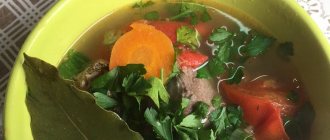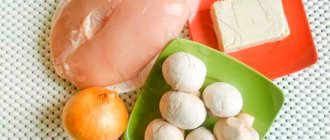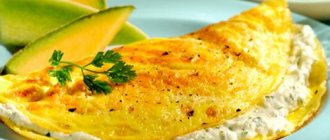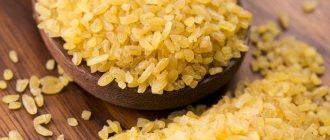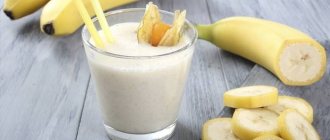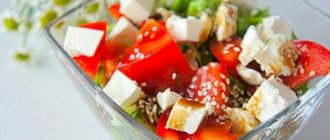Potatoes are a perennial herbaceous tuberous plant of the Solanaceae family, brought from the Netherlands by Peter the Great in the eighteenth century, grown in almost every region of the country, both in private gardens and on farms. The flowers are poisonous. Only the tubers are edible. Their excellent taste and variety of prepared dishes are loved by many.
Potatoes contain substances that are valuable for the body. The concentration of starch in 100 grams of product reaches 20, and protein - up to 2 grams. Potato protein contains absolutely all the amino acids inherent in plants. The small concentration of vitamin C is compensated by frequent consumption of the vegetable.
It's hard to find someone who doesn't like to eat potatoes. However, given that those who want to lose weight or stay in shape constantly calculate the calories in their daily diet, the question of the calorie content of this vegetable is relevant for many. Especially taking into account the fact that the cooking method dramatically changes the energy value of potatoes.
Any boiled food is always healthier than fried food. Cooking does not lead to the formation of high concentrations of substances harmful to the body in products. Potatoes not only do not become unhealthy food, but also maintain a calorie content close to natural, that is, at a level of 70 to 80 kilocalories.
During the cooking process, the energy value certainly decreases, but only by a small amount. In order for the body to receive the required amount of phosphorus, carbohydrates, and potassium, it is enough to eat 300 g of boiled potatoes per day.
How many calories are in fries?
Potato pieces fried in copious amounts of vegetable oil are incredibly popular in fast food chains and are McDonald's signature dish. A special method of preparing crispy potatoes increases the calorie content of the vegetable significantly. There are about 400 kcal per 100 grams of fries.
This covers a quarter of a person’s daily caloric intake.
Many times more than boiled, the quantity is close to fries. 100 grams of fried potatoes contain 327 kcal.
The root vegetable acquires an additional amount of energy value through frying. Therefore, the more oil is added during cooking, the higher the calorie content.
The root vegetable, unpeeled and boiled in water, cooks the fastest. The potatoes are washed and placed in a pan filled with water. The calorie content of such a dish does not exceed 74 kcal for every 100 grams of product.
This energy value is truly low, so you can eat jacket potatoes even while on a diet. Along with the low amount of calories, the dish has other benefits. It is rich in magnesium and potassium.
The most useful for preparing jacket potatoes are young tubers. The outer layer of these root vegetables contains a large amount of microelements that are important for human health.
The value of potatoes directly depends on the length of shelf life. The more time passes from the moment of harvesting, the greater the amount of harmful substances accumulates in the upper layer. It is not recommended to eat such root vegetables unpeeled.
Potatoes are the most common root vegetable in our country. There are many recipes for its preparation, but the simplest option is boiled potatoes. All you need to do is peel the root vegetables, add the required amount of water and cook.
Potatoes have a rich mineral composition
, it contains vitamins necessary for our body.
100 grams of boiled potatoes with salt contain about 87 kcal.
The nutritional value of a 100-gram serving of boiled potatoes is:
- proteins 1.7 grams;
- fat 0.1 grams;
- carbohydrates 20 grams.
Most of the carbohydrates are starch. To reduce its content, it is recommended to keep the peeled potatoes in cold water before cooking.
Potatoes contain more calories than other vegetables, but many nutritionists recommend including them in the diet for people trying to normalize their weight.
Experts may advise limiting potato consumption for people suffering from various types of diabetes. This is due to the fact that starch affects blood sugar levels.
Calorie content of potatoes
In Russia, potatoes enjoy well-deserved respect. Both children and adults adore a variety of delicious dishes made from this vegetable. The calorie content of potatoes is quite high. Therefore, those who monitor their weight are forced to limit their consumption. The number of calories in potatoes per 100 grams depends on the type of vegetable, time of year and method of cooking. In this article we will try to figure out what the true calorie content of potatoes and dishes made from them is. Is it necessary to completely give up potatoes to lose weight?
Boiled potatoes with butter (with vegetable oil)
To make boiled potatoes more tasty, add butter or vegetable oil. In both cases, the calorie content of the dish increases.
If you add butter to boiled potatoes, then 100 grams of this dish will contain about 126 kcal.
Butter can enrich potatoes with more than just calories. This product has a balanced set of beneficial microelements, which also have a beneficial effect on the functioning of our body.
Potatoes will be just as tasty if you sprinkle them with vegetable oil. The addition of fats has a positive effect on the absorption of vitamins by the body.
, since most of them are fat soluble.
A 100-gram serving of boiled potatoes with vegetable oil contains 124 kcal.
To preserve the beneficial properties of potatoes, you should cook them over low heat, avoiding strong boiling. The amount of water used should be minimal, as many microelements are easily dissolved in it.
Calorie content of jacket potatoes
For various diets, it is better to eat potatoes boiled in their jackets. It has a low calorie content, but gives a feeling of fullness
.
100 grams of potatoes boiled in their jackets will add 75 kcal to the body.
You can often see that potatoes, boiled in their jackets, are eaten with the peel. Experts do not advise doing this, because it accumulates not only vitamins, but also harmful substances that got into the potatoes from the soil. During long-term storage, a substance is formed under the peel that can cause poisoning.
Therefore, closer to spring, potatoes need to be peeled, and the cut layer should be quite thick.
New potatoes are low in carbohydrates. A large amount of starch is formed already during storage of potatoes in warehouses.
The most suitable time to follow the potato diet will be the end of summer.
, when there is a massive harvest of this root crop.
In order not to harm your figure, you should eat potatoes in small quantities with vegetables and without high-calorie additives.
If simply boiled potatoes do not excite your appetite, then you can try baking them in the oven. Potatoes prepared in this way have a fragrant crispy crust, which makes this dish more appetizing. When baked in foil, the greatest number of beneficial properties of potatoes are preserved.
Potato
rich in vitamins and minerals such as: vitamin B6 - 15%, vitamin C - 22.2%, potassium - 22.7%, silicon - 166.7%, cobalt - 50%, copper - 14%, molybdenum - 11, 4%, chromium - 20%
- Vitamin B6
is involved in maintaining the immune response, processes of inhibition and excitation in the central nervous system, in the transformation of amino acids, the metabolism of tryptophan, lipids and nucleic acids, promotes the normal formation of red blood cells, and maintaining normal levels of homocysteine in the blood. Insufficient intake of vitamin B6 is accompanied by decreased appetite, impaired skin condition, and the development of homocysteinemia and anemia. - Vitamin C
is involved in redox reactions, the functioning of the immune system, and promotes the absorption of iron. Deficiency leads to loose and bleeding gums, nosebleeds due to increased permeability and fragility of blood capillaries. - Potassium
is the main intracellular ion that takes part in the regulation of water, acid and electrolyte balance, and is involved in the processes of conducting nerve impulses and regulating blood pressure. - Silicon
is included as a structural component in glycosaminoglycans and stimulates collagen synthesis. - Cobalt
is part of vitamin B12. Activates enzymes of fatty acid metabolism and folic acid metabolism. - Copper
is part of enzymes that have redox activity and are involved in the metabolism of iron, stimulates the absorption of proteins and carbohydrates. Participates in the processes of providing oxygen to the tissues of the human body. Deficiency is manifested by disturbances in the formation of the cardiovascular system and skeleton, and the development of connective tissue dysplasia. - Molybdenum
is a cofactor for many enzymes that ensure the metabolism of sulfur-containing amino acids, purines and pyrimidines. - Chromium
is involved in the regulation of blood glucose levels, enhancing the effect of insulin. Deficiency leads to decreased glucose tolerance.
more hide
You can see the complete directory of the most useful products in the application
When it comes to creating a diet for a person who is losing weight, the first step is to calculate the energy value of foods and their glycemic index. And at this stage, you can hear a strong recommendation from nutritionists not to eat potatoes, or at least do it as rarely as possible. Why does this happen, how many calories are in boiled potatoes, which most often end up on the everyday menu?
How many calories are in boiled potatoes?
This product is already hundreds of years old - in Russia it began appearing on the dinner table back in the 18th century, but it began to be grown more than 10 centuries ago. The importance of the potato was not denied then or now: thanks to its chemical composition, which varies in part depending on the soil in which the tubers are grown, they are the most nutritious member of the vegetable group. And in terms of its cost, it is also one of the most affordable, which makes it extremely popular in most countries.
Potatoes are consumed only after heat treatment, because... the raw product contains solanine, which is poisonous to the human body. It is fried, stewed, baked, steamed, grilled, over a fire, but most often it is boiled, so most people who care about their figure are mainly interested in the calorie content of boiled potatoes. Of course, this indicator will depend on exactly how (or, more precisely, with what) it was prepared. So:
- The calorie content of boiled potatoes per 100 grams will be 80 kcal if the product is in clean or salted water.
- If you cooked jacket potatoes, their calorie content will be 74-75 kcal for the same 100 g.
- New potatoes show the most record numbers - only 68 kcal per 100 g after boiling.
- Sweet potatoes (yams) are lighter than usual - when boiled, they “weigh” only 61 kcal.
- As for boiled potatoes, which were later mashed, then you need to consider the addition of components that give the dish a more delicate texture. Most often, their role is played by butter and milk, so you need to add the calorie content of each of these products to the calorie content of regular boiled potatoes.
In the case when the housewife does not add anything to the water, the energy value of the finished product is almost no different from the figures that the raw product has: a drop of 4-5 units is possible, but no more. Thus, if you do not want to calculate too scrupulously, remember that the calorie content of boiled potatoes without additives will range from 70 to 80 kcal.
Steamed potatoes calorie content. How many calories are in potatoes
Potatoes are a tuberous vegetable, which is rightly called the second bread. It has high taste properties and is easy to cook. The benefits of potatoes depend on the method of preparing the dish. Thus, steaming and peeling, baking help preserve vitamins and mineral salts, and mashed potatoes and soufflé reduce mechanical irritation of the gastric mucosa. These and other qualities have found their application in dietary nutrition:
- The high potassium content with low sodium content determines its diuretic effect and use in kidney and heart diseases
- A source of delicate fiber, which has a normalizing effect on the intestinal microflora and does not burden the motor function of the stomach.
- It contains a small amount of vitamin C, but due to its frequent use it is one of its main sources.
- Raw potato juice stimulates intestinal motility; it is included in the diet for peptic ulcers and gastritis.
The calorie content of 100 g of potatoes is on average 80 kcal, but depending on the cooking method it can vary significantly. For example, 100 g of mashed potatoes gives 74 kcal, and fried potatoes - 192 kcal.
The negative properties of potatoes include:
- high content of starch, which is digestible by 95%;
- the ability to cause increased gas formation and stomach irritation. To reduce this property, it is recommended to combine potatoes with carrots;
- the possibility of solanine poisoning when eating green and sprouted potatoes;
- the negative impact of nitrates, which are especially abundant in young vegetables.
In order to determine how many calories are in potatoes, indicate its weight in grams in the “Some vegetable dishes” section in the calculator form below.
If you need to calculate the calorie content of a complex dish that includes potatoes, indicate its weight in grams in the “Vegetables, herbs, herbs, fresh roots” section.
How many calories
Calorie calculator
The old version of the calorie calculator has been saved, you can find it here.
Will potatoes harm your figure?
Since most people's interest in the energy value of this product arises from the perspective of losing weight, it is worth talking about how exactly these notorious 70-80 kcal affect fat deposits and weight in general.
- The reason why nutritionists advise not to overuse potatoes is not the calorie content, but the high proportion of starch (almost 30%) in the chemical composition of the tubers.
In addition, it also contains sugars (glucose, fructose, sucrose, a little maltose), which accumulate during long-term storage. Starch, on the contrary, is destroyed. Accordingly, the calorie content of young potatoes is less than that of old ones.
- In 100 g of boiled potatoes you can find 16.7 g of carbohydrates, as well as 2 g of proteins. There is almost no fat here - only 0.4 g.
CHEMICAL COMPOSITION AND NUTRITIONAL ANALYSIS
Nutritional value and chemical composition of “Boiled potatoes 1-206”.
The table shows the nutritional content (calories, proteins, fats, carbohydrates, vitamins and minerals) per 100 grams of edible portion.
| Nutrient | Quantity | Norm** | % of the norm in 100 g | % of the norm in 100 kcal | 100% normal |
| Calorie content | 75 kcal | 1684 kcal | 4.5% | 6% | 2245 g |
| Squirrels | 2 g | 76 g | 2.6% | 3.5% | 3800 g |
| Fats | 0.4 g | 56 g | 0.7% | 0.9% | 14000 g |
| Carbohydrates | 15.8 g | 219 g | 7.2% | 9.6% | 1386 g |
| Alimentary fiber | 1.4 g | 20 g | 7% | 9.3% | 1429 g |
| Water | 78.9 g | 2273 g | 3.5% | 4.7% | 2881 g |
| Ash | 1.3 g | ~ | |||
| Vitamins | |||||
| Vitamin A, RE | 3 mcg | 900 mcg | 0.3% | 0.4% | 30000 g |
| beta carotene | 0.02 mg | 5 mg | 0.4% | 0.5% | 25000 g |
| Vitamin B1, thiamine | 0.1 mg | 1.5 mg | 6.7% | 8.9% | 1500 g |
| Vitamin B2, riboflavin | 0.06 mg | 1.8 mg | 3.3% | 4.4% | 3000 g |
| Vitamin B4, choline | 13.2 mg | 500 mg | 2.6% | 3.5% | 3788 g |
| Vitamin B5, pantothenic | 0.509 mg | 5 mg | 10.2% | 13.6% | 982 g |
| Vitamin B6, pyridoxine | 0.269 mg | 2 mg | 13.5% | 18% | 743 g |
| Vitamin B9, folates | 9 mcg | 400 mcg | 2.3% | 3.1% | 4444 g |
| Vitamin C, ascorbic acid | 14.5 mg | 90 mg | 16.1% | 21.5% | 621 g |
| Vitamin E, alpha tocopherol, TE | 0.1 mg | 15 mg | 0.7% | 0.9% | 15000 g |
| Vitamin K, phylloquinone | 2.1 mcg | 120 mcg | 1.8% | 2.4% | 5714 g |
| Vitamin RR, NE | 1.5 mg | 20 mg | 7.5% | 10% | 1333 g |
| Niacin | 1.1 mg | ~ | |||
| Macronutrients | |||||
| Potassium, K | 499 mg | 2500 mg | 20% | 26.7% | 501 g |
| Calcium, Ca | 12 mg | 1000 mg | 1.2% | 1.6% | 8333 g |
| Magnesium, Mg | 22 mg | 400 mg | 5.5% | 7.3% | 1818 |
| Sodium, Na | 95 mg | 1300 mg | 7.3% | 9.7% | 1368 g |
| Sera, S | 17.1 mg | 1000 mg | 1.7% | 2.3% | 5848 g |
| Phosphorus, Ph | 54 mg | 800 mg | 6.8% | 9.1% | 1481 g |
| Microelements | |||||
| Iron, Fe | 0.8 mg | 18 mg | 4.4% | 5.9% | 2250 g |
| Manganese, Mn | 0.14 mg | 2 mg | 7% | 9.3% | 1429 g |
| Copper, Cu | 167 mcg | 1000 mcg | 16.7% | 22.3% | 599 g |
| Selenium, Se | 0.3 mcg | 55 mcg | 0.5% | 0.7% | 18333 g |
| Zinc, Zn | 0.27 mg | 12 mg | 2.3% | 3.1% | 4444 g |
| Digestible carbohydrates | |||||
| Starch and dextrins | 14.9 g | ~ | |||
| Mono- and disaccharides (sugars) | 0.9 g | max 100 g | |||
| Saturated fatty acids | |||||
| Saturated fatty acids | 0.1 g | max 18.7 g | |||
| Polyunsaturated fatty acids | |||||
| Omega-3 fatty acids | 0.01 g | from 0.9 to 3.7 g | 1.1% | 1.5% | |
| Omega-6 fatty acids | 0.032 g | from 4.7 to 16.8 g | 0.7% | 0.9% |
The energy value of boiled potatoes according to 1-206 is 75 kcal.
Main source: Skurikhin I.M. and others. Chemical composition of food products. .
** This table shows the average levels of vitamins and minerals for an adult. If you want to know the norms taking into account your gender, age and other factors, then use the My Healthy Diet app.
Vitamins in New Potatoes
https://www.youtube.com/watch?v=ytpressen-GB
Young potatoes contain the following vitamins: Ash, Water, Dietary fiber, Sodium, Potassium, Phosphorus, Magnesium, Calcium, Sulfur, Copper, Boron, Iodine, Manganese, Chromium, Fluorine, Molybdenum, Vanadium, Cobalt, Nickel, Zinc, Iron, Chlorine .
| Vitamin | Meaning |
| Vitamin B1 (thiamine), mg | 0,12 |
| Vitamin B2 (riboflavin), mg | 0,07 |
| Vitamin B6 (pyridoxine), mg | 0,3 |
| Vitamin B9 (folic), mcg | 8 |
| Vitamin C, mg | 20 |
| Vitamin E (TE), mg | 0,1 |
| Vitamin PP (Niacin equivalent), mg | 1,3 |
| Vitamin A (VE), mcg | 2 |
| Vitamin B5 (pantothenic), mg | 0,3 |
| Vitamin H (biotin), mcg | 0,1 |
| Product | Kcal | Proteins, g | Fats, g | Angle, g |
| White Potatoes (with Peel) | 70 | 1,68 | 0,1 | 15,71 |
| White Potatoes (with Peel, Baked) | 94 | 2,1 | 0,15 | 21,08 |
| Mashed potatoes | 100 | 1,8 | 3,54 | 15,72 |
| Fried potatoes | 149 | 2,32 | 7 | 20,06 |
| Potatoes (without peel, with salt, boiled) | 87 | 1,87 | 0,1 | 20,13 |
| Mashed Potatoes (from Dry Powder) | 105 | 2,02 | 5,56 | 12,22 |
| Mashed Potatoes (with Whole Milk) | 83 | 1,92 | 0,57 | 17,53 |
| Mashed Potatoes (with Whole Milk and Butter) | 113 | 1,87 | 4,22 | 16,77 |
| Baked Potato (Eat with Peel) | 109 | 2,43 | 2,2 | 20,53 |
| Baked Potato (Eat without Peel) | 92 | 1,95 | 0,1 | 21,39 |
| Potato Pancakes (from Frozen) | 217 | 3,14 | 11,43 | 27,93 |
| Red Potatoes (with Peel) | 72 | 1,89 | 0,14 | 15,9 |
| Red Potatoes (with Peel, Baked) | 89 | 2,3 | 0,15 | 19,59 |
| Sweet potato | 60 | 2 | 13,8 | |
| Potato | 77 | 2 | 0,4 | 16,3 |
| Yam | 118 | 1,53 | 0,17 | 23,78 |
| New potatoes | 77 | 2 | 0,4 | 16,3 |
| Boiled potatoes | 86 | 1,71 | 0,1 | 18,21 |
| Pickled potatoes | 86 | 1,71 | 0,1 | 18,21 |
| Purple potatoes | 72 | 2 | 0,4 | 16 |
| Dried potatoes | 317 | 6,6 | 0,3 | 71,6 |
| Frozen French fries | 260 | 2,83 | 14,95 | 25,65 |
| Potato flakes | 369 | 7 | 1 | 83 |
| French fries, with salt added during frying, frozen, before cooking (raw) | 167 | 2,41 | 5,53 | 24,58 |
| French fries, with salt added during frying, frozen, after cooking in the oven | 199 | 2,9 | 6,76 | 28,86 |
| French fries, cut or straight, with salt added during frying, frozen, before cooking (raw) | 174 | 2,12 | 5,05 | 27,22 |
| French fries, cut or straight, with salt added during frying, frozen, after cooking in the oven | 166 | 2,51 | 5,13 | 25,2 |
| White potatoes, unpeeled, baked | 94 | 2,1 | 0,15 | 18,98 |
| White potatoes, unpeeled, raw | 69 | 1,68 | 0,1 | 13,31 |
| Jacket potatoes, boiled, skins with salt | 78 | 2,86 | 0,1 | 13,9 |
| Jacket potatoes, boiled, peeled, no added salt | 78 | 2,86 | 0,1 | 13,91 |
| Jacket potatoes, boiled, core with salt | 87 | 1,87 | 0,1 | 18,13 |
| Jacket potatoes, boiled, core, no added salt | 87 | 1,87 | 0,1 | 18,33 |
| Jacket potatoes baked without salt | 93 | 2,5 | 0,13 | 18,95 |
| Jacket potatoes cooked in the microwave without adding salt | 132 | 4,39 | 0,1 | 24,13 |
| Microwaved jacket potatoes, skin and core, with salt | 105 | 2,44 | 0,1 | 21,94 |
| Jacket potatoes, microwaved, peeled, with salt | 132 | 4,39 | 0,1 | 29,63 |
| Jacket potatoes, microwaved, core, no salt added | 100 | 2,1 | 0,1 | 21,68 |
| Microwaved jacket potatoes, core, with salt | 100 | 2,1 | 0,1 | 21,68 |
| Breaded potatoes, homemade according to recipe with added margarine | 132 | 5,06 | 7,59 | 9,47 |
| Breaded potatoes, homemade according to recipe with added butter | 132 | 5,06 | 7,59 | 9,47 |
| Breaded potatoes, dry mix, uncooked | 314 | 8,9 | 3,7 | 70,21 |
| Breaded potatoes, dry mixture prepared with water, milk and butter | 93 | 2,3 | 4,12 | 11,94 |
| Boiled potatoes without skin without adding salt | 86 | 1,71 | 0,1 | 18,21 |
| Boiled potatoes without peel with salt | 86 | 1,71 | 0,1 | 18,01 |
| Potato wedges, frozen | 123 | 2,7 | 2,2 | 23,5 |
| Red potatoes, unpeeled, baked | 89 | 2,3 | 0,15 | 17,79 |
| Red potatoes, unpeeled, raw | 70 | 1,89 | 0,14 | 14,2 |
| Potato slices with added margarine, homemade | 88 | 2,87 | 3,68 | 8,88 |
| Potato slices with added butter, homemade | 88 | 2,87 | 3,68 | 8,88 |
We invite you to familiarize yourself with dietary mushroom soup: ingredients and recipes


